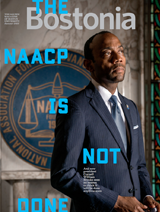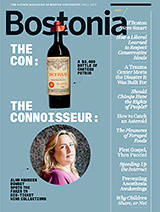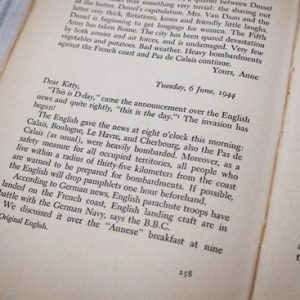When the US Marine Band plays “Hail to the Chief” as President Donald Trump enters a room, the rousing melody seems to be all about pomp and pageantry, but history gives the 200-year-old song a darker resonance, says Joseph Rezek.
“There’s a through-line connecting ‘Hail to the Chief’ and the Scottish character at the beginning of it all and Trump that I find totally disturbing,” Rezek, a College of Arts & Sciences assistant professor of English, says cheerfully.
As Rezek writes in London and the Making of Provincial Literature: Aesthetics and the Transatlantic Book Trade, 1800–1850 (University of Pennsylvania Press, 2015), “Hail to the Chief” has roots in 16th-century Scotland, when the Highlands were the realm of chieftains, feudal loyalties, and outlaws, while the Lowlands were the realms of the court, home to the kings and queens of Scotland.
In 1810, Scottish novelist and poet Sir Walter Scott penned The Lady of the Lake, a narrative poem about the conflict between the two cultures. In the poem, the Highlanders are led by a fictional chieftain named Roderick Dhu and the Lowlanders by King James V.
Scott had always been popular with Americans, and they fell hard for The Lady of the Lake during the War of 1812, when the narrative of outlaws battling the British elite had particular appeal. A British stage adaptation of the poem was remounted in the United States by various producers, and in 1813, the US Navy named a warship built on Lake Ontario The Lady of the Lake.
To many Americans, Rezek says, Dhu was a proud symbol of native populism and nationalism that was being supplanted by a new class of elites.
“What strikes me more about the analogy with Trump, though, is that Dhu commands absolute loyalty in the feudal way. You have to pledge allegiance,” Rezek says. “Hail to the Chief—that phrase is about the kind of loyalty you have to show. Trump’s insistence upon such loyalty is the same thing. That can make a seemingly innocuous moment, when the song is played for him, seem a bit darker.”

A page of the “Hail to the Chief” sheet music, from Wikimedia Commons, in the public domain.
Songwriter John Sanderson composed the now-familiar melody for the London stage production of The Lady of the Lake, where it was the war anthem of Dhu’s clan, with lyrics from Scott’s poem, including the opening line, “Hail to the Chief who in triumph advances!”
The song quickly became popular in the United States, inspiring many rip-offs and parodies, and the sheet music was widely reprinted. Rezek notes that the song was first heard beyond the theater during a celebration of the peace here in Boston when the war ended in 1815—ironic, because New Englanders hated the War of 1812. The event also honored George Washington.
“So, you had people in Baltimore and Philadelphia who supported the war going to this Walter Scott play and making Scottish nationalism part of American nationalism,” Rezek says, “and yet the first time the song was played in honor of a president was in Boston to celebrate the peace.”
Rezek’s scholarship focuses on “the relationship between the technology of print and the literature, history, and culture of the post-Revolutionary Anglophone world.” But he had no inkling that the 45th US president would add such resonance to the song.
Andrew Jackson was the first sitting president honored by a “Hail to the Chief” performance in 1828. “Like the original chief, Jackson was Scottish, Scots-Irish, actually, and fashioned himself as an outsider taking over elite Washington, much as Trump says he’s doing now,” Rezek says. There’s a “raging debate” among historians these days about whether the comparison is appropriate, he says, usually depending on whether the historian thinks Jackson is a hero or a scoundrel.
Ultimately, “people on the right and left all appropriate all the Founding Fathers for their own reasons,” he says.
Jackson and Alexander Hamilton have been the subject of recent hit musicals—rock for Bloody Bloody Andrew Jackson and hip-hop for Hamilton. Appropriation can go in any direction. Consider two other notable ways Americans were inspired by The Lady of the Lake: the burning cross used to summon Clan Alpine fighters in a scene in the play is said to have inspired a burning cross scene in D. W. Griffith’s original 1915 Birth of a Nation, which in turn inspired the Ku Klux Klan to take up the practice. And it’s said that when the abolitionist Frederick Douglass first escaped from slavery, a friend who had just read Scott’s poem suggested his new last name after the Douglas family, which plays a major role in The Lady of the Lake.
“Hail to the Chief” became the president’s official anthem during the presidency of John Tyler (1841–45), and aside from a gap during the presidency of Chester A. Arthur (1881–85), who preferred John Philip Sousa, it has served ever since.
“Walter Scott, like so much of popular culture, was used and appropriated in many, many different ways,” Rezek says. “It’s just like how Shakespeare is used in different ways or people drawing drastically different Star Wars analogies across the political spectrum. Popular songs were especially malleable in the early 19th century. They were constantly used and challenged and reused in so many different ways.
“Remember,” he adds, “the ‘Star-Spangled Banner’ was written to the tune of a British drinking song and repatriated as a song against the British. So, there really are no rules.”















































Related Stories
Moms in Chief Explores the Pitfalls Women in Politics Face
COM prof’s book: how First Ladies, other political women struggled to define themselves beyond motherhood
New BU Police Chief Kelly Nee a 33-Year Boston Police Department Veteran
Developed security plans after Boston Marathon bombings
Jump-start Your Job Search: Ippolita Chief Executive Officer
Alum Jill Beraud gives career advice
Post Your Comment